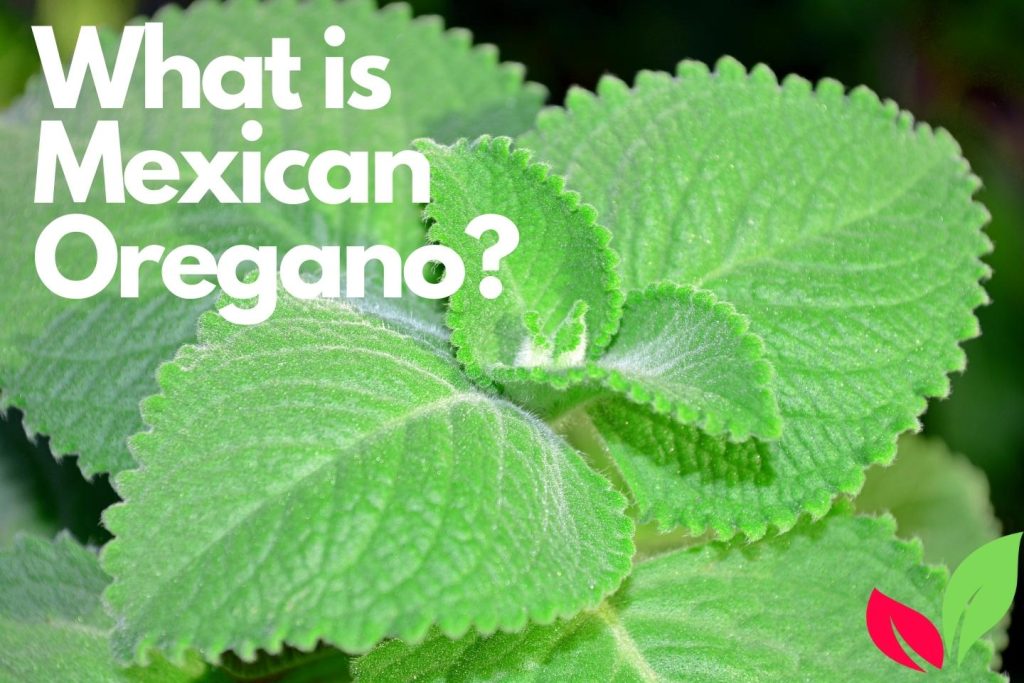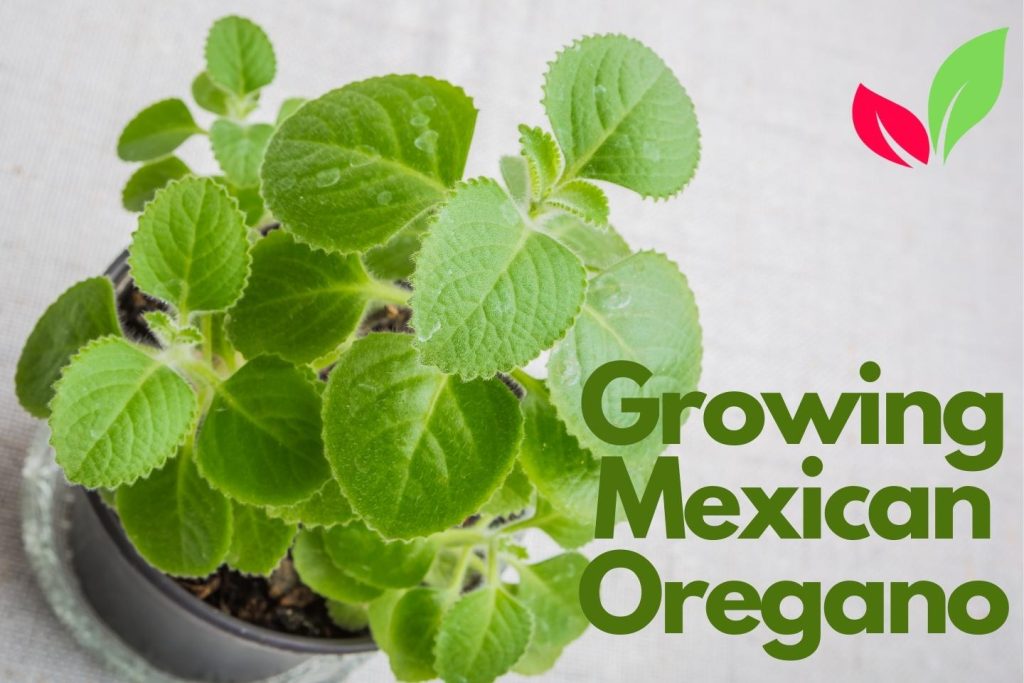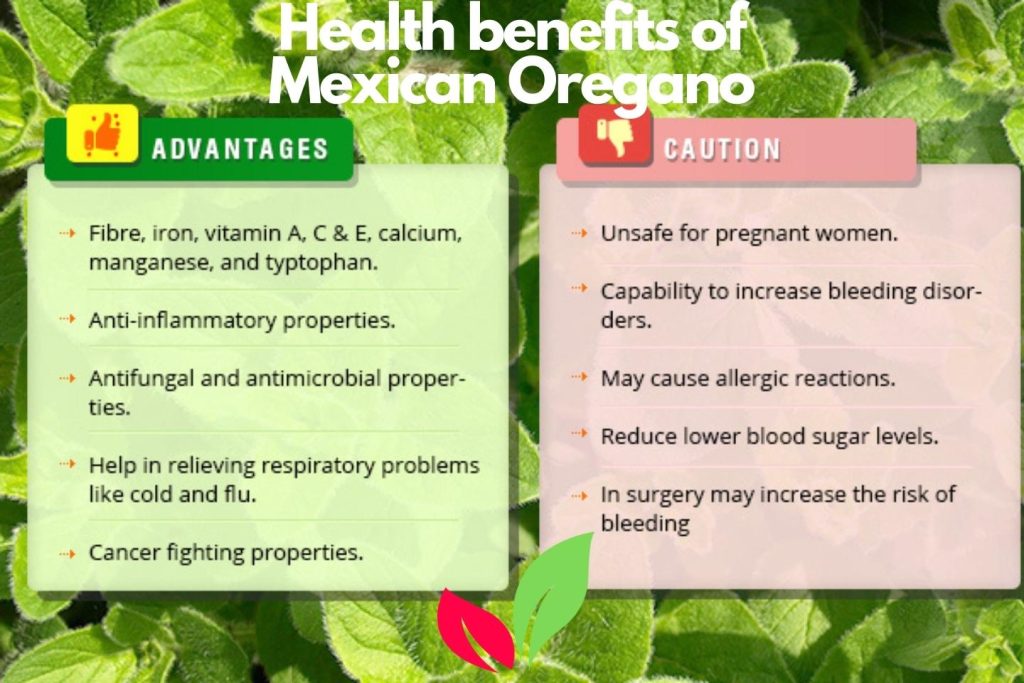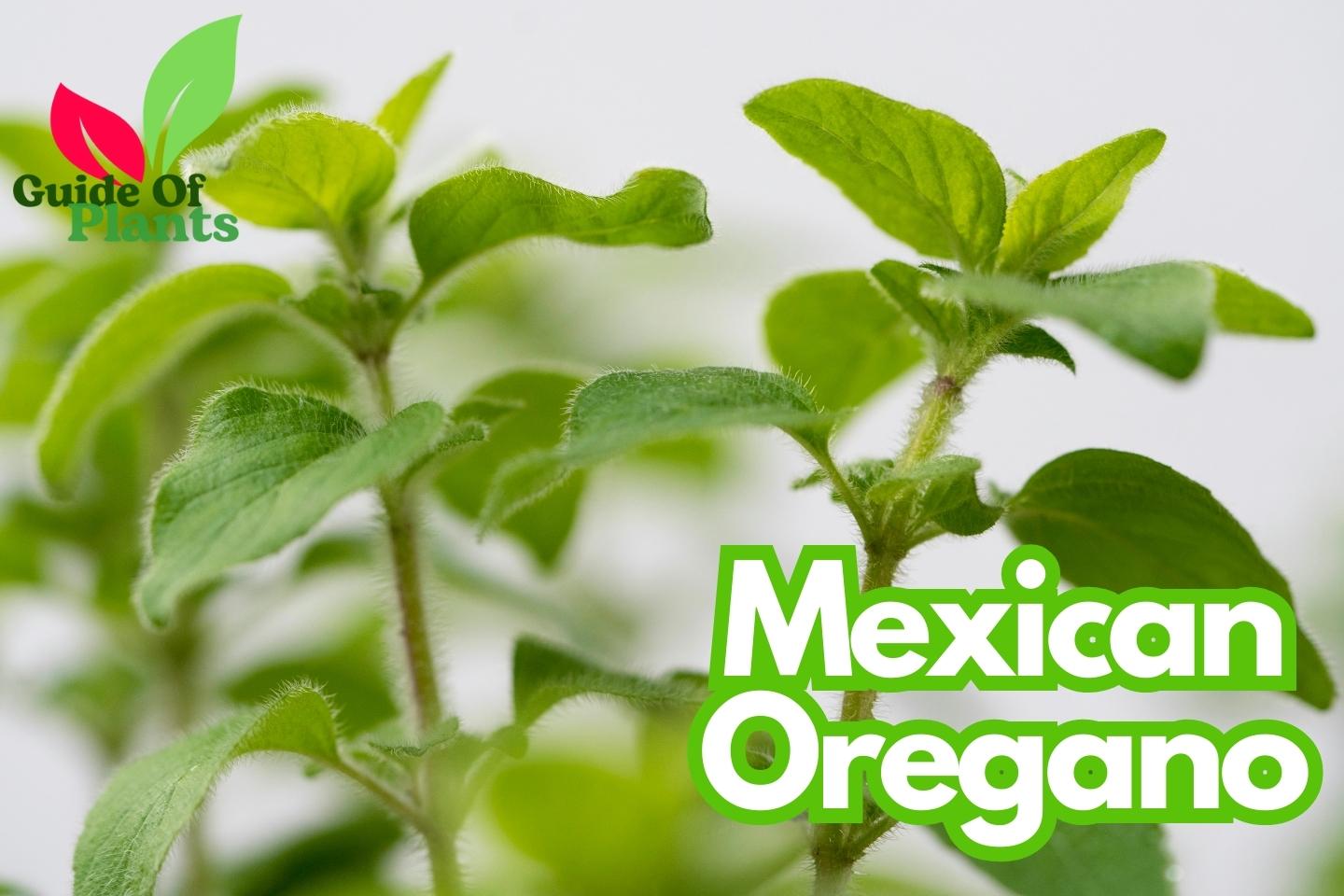Mexican oregano is a fragrant herb. It specially used for its unique and mouth-watering flavor. Although it shares a name with the more common Mediterranean. It has its own distinct identity and uses. This hearty herb has aromatic leaves that impart a citrusy, lime-like taste and aroma. In this blog post, we will explore everything about Mexican oregano. Let’s start with Guide of Plants.
Table of Contents
Know More About:
What is Mexican Oregano?

Mexican oregano, also known as Mexican marjoram or Mexican wild sage, has the botanical name Lippia graveolens. It is native to the rocky, mountainous regions of Mexico as well as Central America. This peppery herb is very different from the milder, woodsy Mediterranean oregano used in Italian cooking. This herb has an intense, citrusy bite with hints of lime and lemon.
The flavor is strong enough to stand up to spicy chili peppers and bold sauces. When used in the right amounts, this oregano provides a bright, perfumed undertone to dishes. It is a versatile herb used in many savory dishes in Mexican cuisine, especially meats, beans, and sauces. Nutritionally, It is high in antioxidants and contains compounds that provide antibacterial and antifungal properties. Traditionally it has been used as an herbal remedy to aid digestion.
Mexican Oregano Seeds
Mexican oregano seeds can be purchased online or at some garden stores, usually under the botanical name Lippia Graveolens. Common varieties include the species Lippia graveolens as well as cultivars like ‘Mexican oregano’ and ‘Veracruz’. The seeds need warm temperatures around 70-75°F to germinate, taking 2-3 weeks to sprout. It’s best to soak the tiny seeds overnight before planting them indoors in seed trays, about 6-8 weeks prior to the last expected frost.
Cover the seeds lightly with 1⁄4 inch of seed starting mix and keep them consistently moist until sprouting. Once seedlings have developed, harden them off before transplanting into the garden after the danger of frost has passed. Space the plants 12-18 inches apart in full sun. It grown from seeds can be harvested within the first year once the plants reach about 6 inches tall. For the best flavor, harvest before the plant flowers. Store unused seeds in an airtight, cool dark place where they will remain viable for 1-3 years. With the proper process, the seeds can yield abundant harvests for years to come.
Growing Mexican Oregano

This plant grows in hot, dry conditions similar to its native climate. It needs full sun exposure and fast-draining, sandy soil with a pH between 6-8. The plant is drought tolerant once established but regular watering is needed for young plants. It can be grown from seeds started indoors 6-8 weeks before the last frost date. Alternately, you can propagate new plants from cuttings taken from mature, healthy stems.
The cuttings root readily in potting mix. Caring for young oregano plants involves regular watering, occasional fertilizing, and pruning any dead or damaged growth. As the plants mature, avoid overwatering which can lead to root rot. Common pests include aphids, spider mites and whiteflies. Care must be taken to identify and control these insects before they damage the foliage.
Maximizing Growth and Yields
This plant grows in full sun. Plants should be spaced 12-24 inches apart depending on the variety. Pruning the plants after flowering will encourage bushy, compact growth. The leaves can be harvested several times in the first year. After the plants are established, harvest only 1/3 of the stems at a time to allow continual regrowth. The vigorous plants can be cut back almost to the ground at the end of the season. Bring potted plants indoors before first frost. The growing season can be extended by planting Mexican oregano alongside south facing walls which radiate heat. Proper care will be rewarded with an abundant harvest of flavorful leaves.
How to Harvest and Store

It is ready to harvest when the plant has grown to about 12 inches tall. Harvest before the plant flowers for the best flavor. Cut sprigs in the morning after the dew has dried but before the midday heat. Use scissors or pruning shears to cut 5-6 inch sections of stem. After harvesting, the leaves can be dried or frozen for longer term storage. To dry, lay the sprigs in a single layer on a mesh rack or baking sheet. Store the dried leaves in an airtight container out of direct sunlight. Frozen leaves should be placed in air-tight plastic bags. Dried or frozen oregano will keep for up to six months.
Recipes and Uses for Mexican Oregano
This oregano shines in a range of savory dishes from Mexico. It is a key seasoning in chili con carne, tacos al pastor, and fajitas. Use it to flavor meats, fish, eggs, beans, soups, stews and tamales. It is also enhances the flavor of mole sauces and enchilada fillings. For beverages, add it to horchata, agua fresca, or cafe de olla. You can also infuse it into oils and vinegars. It is used in herbal remedies for coughs and digestive issues. Dried oregano works well for long-cooking dishes like stews. Use half the amount of dried in place of fresh leaves. Remove dried oregano before serving as the rehydrated leaves are tough.
Other Oregano Varieties
While Mexican oregano offers a distinct flavor, other oregano varieties also have unique culinary uses. Mediterranean oregano is ideal for Italian and Greek dishes. Spanish oregano is mildly spicy and lemony. Cretan oregano is especially hardy and pungent. For pizza, pasta sauce and bouquet grain bundles, nothing beats the woodsy flavor of Greek oregano. If you enjoy Mexican food, grow both Mexican and Mediterranean oreganos to enjoy their differences.
Mexican Oregano Vs Oregano

While both are oreganos, Mexican and Mediterranean varieties have distinct differences in terms of flavor, smell, origin, climate preference and ideal culinary uses. Mexican oregano packs more of a citrusy punch.
Botanical difference – This is a different plant species than Mediterranean oregano. This is Lippia Graveolens while Mediterranean oregano is Origanum vulgare.
Flavor – It has a stronger, lime-citrus flavor compared to the more subtle, woody flavor of Mediterranean oregano.
Scent – It smells brighter and more potent. Mediterranean oregano has an earthier, muted scent.
Appearance – This oregano leaves are smaller and pointier. Mediterranean oregano has rounded, broad leaves.
Origin – As the names suggest, in native to Mexico/Central America while Mediterranean oregano originated in the Mediterranean region.
Climate – It prefers hot, dry climates. Mediterranean oregano is more tolerant of cool weather.
Uses – Mexican oregano shines in Mexican dishes like salsa, chili, tacos. Mediterranean oregano is better for Italian cuisine like pizza, pasta, herbed breads.
Drying –This oregano retains more flavor when dried. Dried Mediterranean oregano loses some of its nuance.
Strength – The flavor compounds in it are more concentrated so it has a stronger punch. Mediterranean oregano is milder.
Substitution – The two are not always interchangeable. Adjust amounts when substituting. Start with half as much to replace Mediterranean oregano.
Health benefits of Mexican Oregano
Mexican oregano contains antioxidants and antimicrobial compounds that provide several health advantages. The carvacrol and thymol found in it’s oils exhibit antibacterial and antifungal properties, helping fight infections. It also has Rosmarinus acid and luteolin, antioxidants shown to reduce inflammation and prevent cell damage from free radicals. Some studies indicate may aid digestion by stimulating bile flow and intestinal contractions.
The herb’s antispasmodic effects help relax smooth muscle spasms and cramps. Oregano’s nutrients like vitamin A, calcium and manganese support bone health. Its antiseptic capabilities make it beneficial for oral hygiene and dental issues when used topically. Many people drink it’s herbal teas to relieve congestion, coughs, sore throats and other respiratory ailments. When used regularly in cooking, the flavorsome herb can boost overall wellness.

Mexican Oregano Substitute
Here are some good substitutes for this oregano if you don’t have it on hand:
- Mediterranean Oregano – The most readily available option. Use half the amount of Mediterranean oregano to replace Mexican oregano since it’s milder. The flavor won’t be as bright and citrusy, but it works in a pinch.
- Marjoram – Has a similar citrusy, woodsy flavor. Use the same amount as it called for. It lacks some of the spice though.
- Cilantro + Lime – Combines herbal cilantro with bright lime notes. Use 2 tablespoons chopped cilantro and the zest of 1 lime to replace 1 tablespoon Mexican oregano.
- Thyme + Lemon – Thyme has earthy hints that complement lemon’s acidity. Use 2 teaspoons thyme + 1 teaspoon lemon juice instead of 1 tablespoon Mexican oregano.
- Epazote – A Mexican herb with a potent flavor. Use 3/4 of the amount of epazote instead of the it. Can be difficult to find fresh.
- Culantro – Has a stronger, lime-like taste. Substitute 1 teaspoon dried or 1 tablespoon fresh culantro leaves for 1 tablespoon Mexican oregano.
- Italian Seasoning – Contains oregano, basil, thyme. Use double the amount of Italian seasoning to replace Mexican oregano.
- Tobacco – Surprisingly similar flavor profile when used sparingly. Substitute 1/4 teaspoon ground tobacco for 1 tablespoon Mexican oregano.
Any of these substitutions will work to mimic the citrusy punch of this oregano. Adjust the amounts based on taste.
Conclusion
With its citrusy punch and bold flavor, Mexican oregano is a versatile herb that brings an authentic taste to Mexican cuisine. Although it needs hot conditions to thrive, this plant can be grown successfully indoors or outdoors. With the right care and harvesting techniques, a flavorful bounty of leaves can be obtained. Whether added to meat dishes, salsas or moles, Mexican oregano’s distinctive zest shines through. As a finishing accent or cooked in hearty stews, this fragrant herb will enhance many savory recipes.




